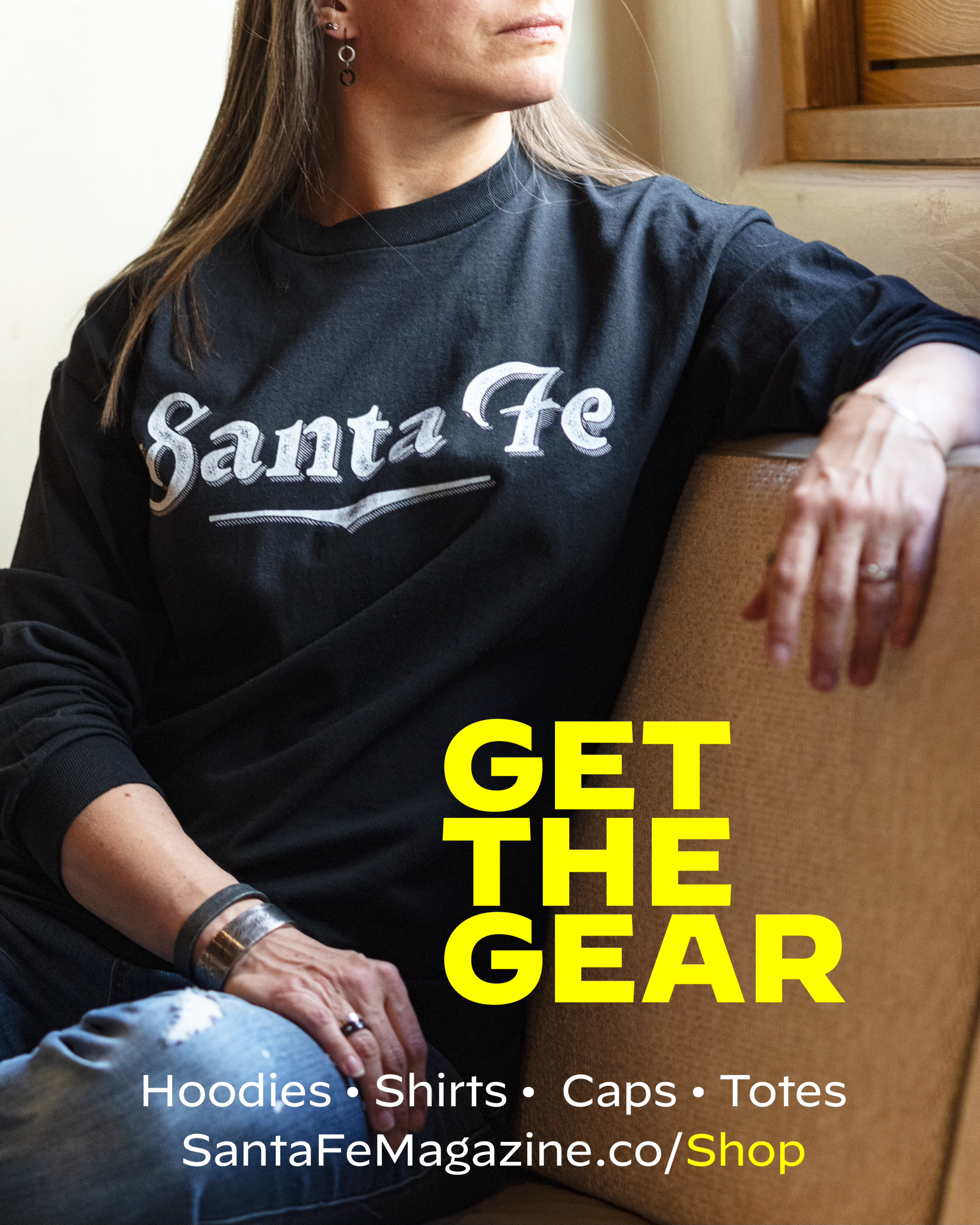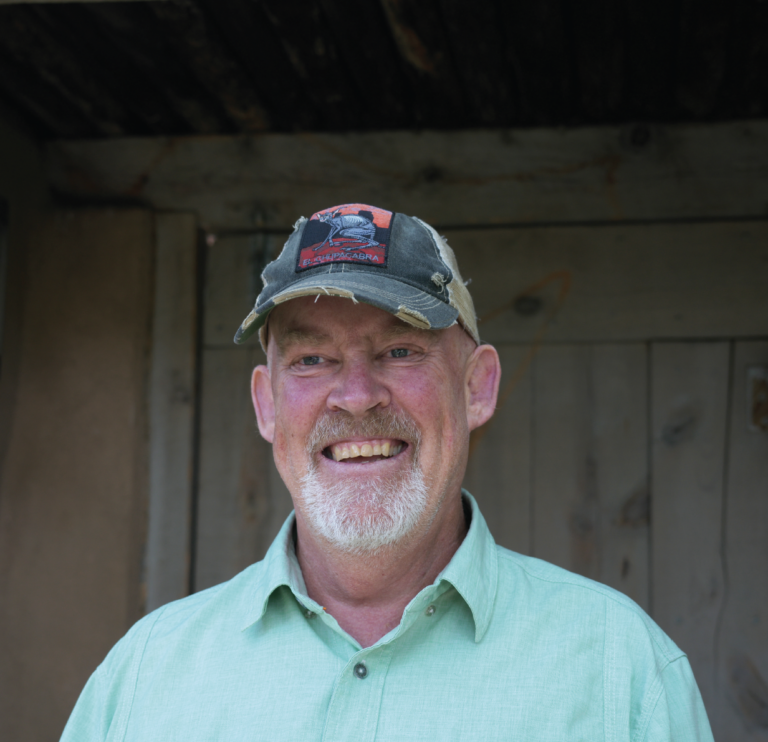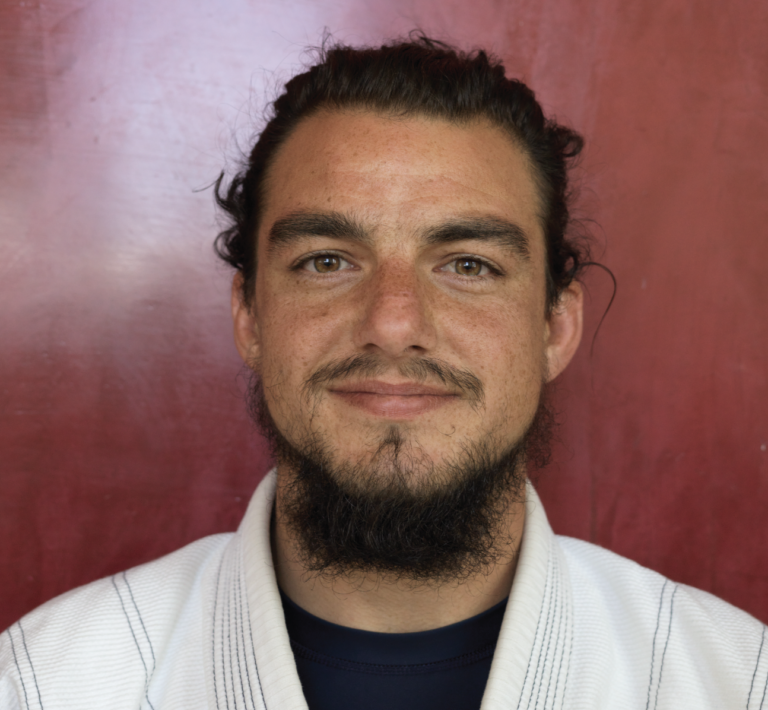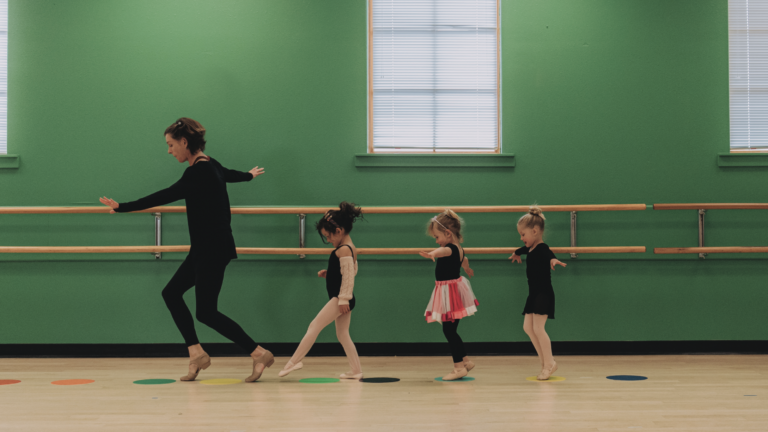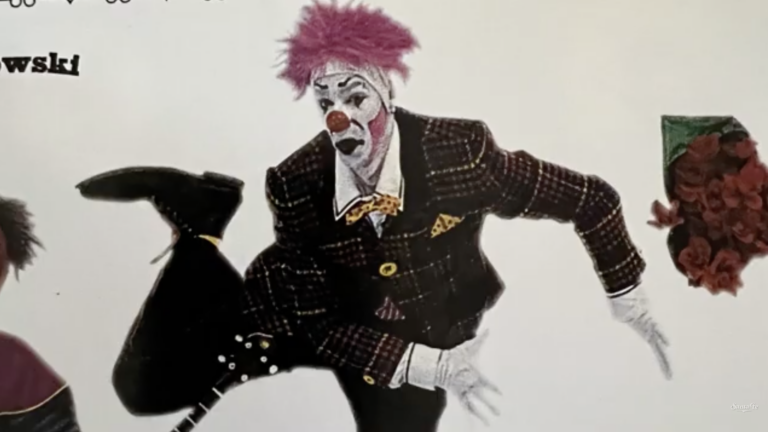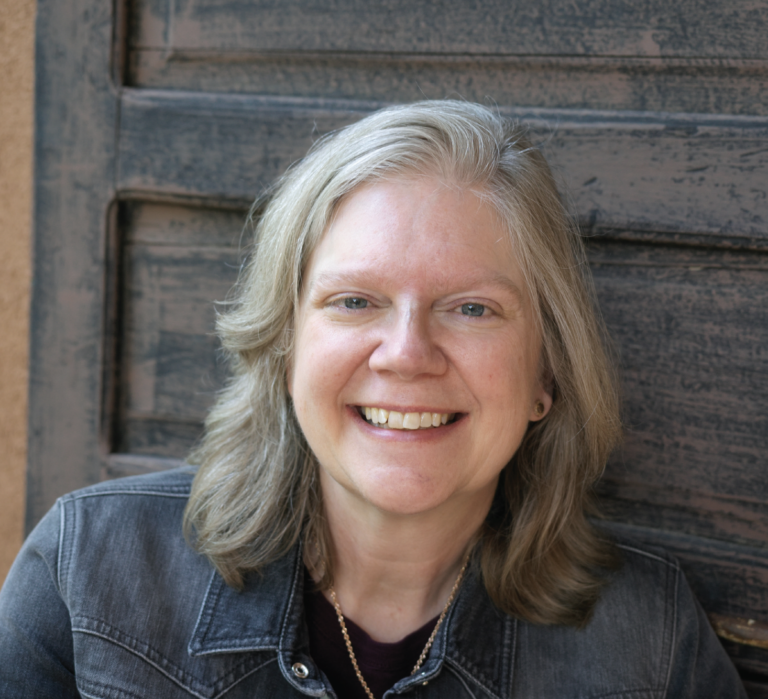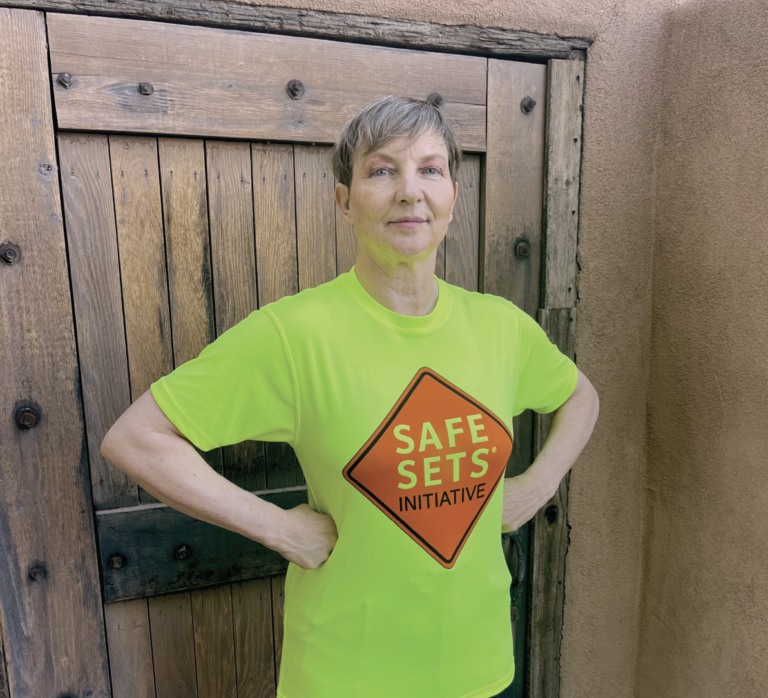YEATS SAID THAT THE WORLD IS FULL OF MAGIC THINGS patiently waiting for our senses to grow sharper. Ivy Ross has spent her entire creative career sharpening her senses, rewiring her brain, living in what she calls “an aesthetic mindset.”
It’s worked pretty well for her. She’s created and redefined brands and products for Disney, Mattel, Gap, Calvin Klein, and now Google. She was on the cover of Fast Company as “the new face of leadership” and in Business Week as “one of the top twenty-five most innovative global business leaders.” That kind of thing.
She has a new book, Your Brain on Art, about how art can help us – maybe even cure us. We spoke with her at her home/studio in Galisteo which, of course, she designed.
How did Google find you?
I was just about to take a job at Airbnb and, at the last minute, I got this mysterious invitation from Google that said, Sign here and we’ll tell you what the role is. Of course, I was totally intrigued, so I signed, and fifteen interviews later, I became head of Google Glass.
And now you are Vice President of Design.
Yeah, I’m in charge of hardware design, which includes the new Google Watch, phones, tablets, speakers, routers – basically anything you can hold in your hand.
With all of these products, I’m a big believer not in either/or but in both. I think life is a tension of opposites, and that’s what makes it cool. It’s really good to step away from what you do and look at things in a different frame. That’s where innovation comes from. So, for example, my industrial designers work a lot on computers, and I thought, How can I give them the experience of the opposite?
So I brought in the artist Judy Tuwaletstiwa to do a half-day workshop on working with clay because I wanted them off the computer and doing things with their hands. The connection between brain and hands is super important, and I worry when we’re not making things with our hands. The day after working with Judy, one of the young designers said, Oh my God, I was so inspired by having worked with the clay that I went down to the model shop and carved a shape for a Chromecast piece out of actual wood and then scanned it into the computer. And I thought, Yes!
I’m a big advocate of play because play is how you invent things. The definition of play is doing something other than what you do every day, without an outcome. We’re too outcome driven.
The watch we just released was inspired by a drop of water. The designers were playing with the way drops of water form on a steel plate. It has this natural rounded shape; you keep adding water, and it just keeps getting bigger and rounder. That’s where the watch shape comes from.
It’s amazing to still be inspired by the awe and wonder of something like that. It’s what makes me get up every day.
You mentioned the brain’s connection to touch. Your new book is about this.
Throughout my career, publishers would ask me to write a book on innovation, or creativity, or my life story, or whatever; and I always thought, That is so boring! I remember saying to myself, If there’s a book to be written, I’ll know when I hear it.
So a few years ago I got a LinkedIn invite from Susan Magsamen at the International Arts and Mind Lab at Johns Hopkins. She said she’d been following my career and wanted to connect with me over something. What was supposed to be a thirty-minute meeting turned into three hours. She explained that her lab had been studying neuroaesthetics, and they were proving how a variety of aesthetic experiences impacts your body and brain.
I immediately knew this was the book.
We all know about the transformative power of art, but we now have scientific proof that the arts can heal our bodies and minds. The interesting thing is that this was coming from science. That’s important because people believe information, and sometimes it has to come in through science. Think about meditation: When the Stanford study showed the Dalai Lama’s brain lighting up in new places, that’s when people began to take meditation seriously.
But this isn’t just abstract science. We really want people to understand that they have agency over their lives and can apply simple things that dramatically help them.
As a culture, we’ve been optimizing productivity since the industrial revolution, thinking that would make us happy; but it didn’t, and in that process we put aside the arts as an unnecessary luxury.
Yet when we delve back into history, we find that Indigenous people didn’t even have a word for art because it was their lives, it was their culture – storytelling, dance, their graphic symbolism. That’s all there was. It was what they were, and it is who we are supposed to be.
What is neuroaesthetics?
I love the combination of the word because it’s really the study of what aesthetics do for our brain and body.
Aesthetics is not just making something look pretty; it’s about the things that make us feel alive. It’s our sensorial nature. So neuroaesthetics is really the study of how aesthetics affects our body.
It has a lot to do with nature. Nature is the most neuroaesthetic place. When we come into contact with plants and vegetation, with water and other natural elements, our adrenaline, blood pressure, and heart rate reduce. Today, doctors are prescribing nature pills – basically telling patients to literally get out in nature! It’s full of temperature, texture, sound, color, and shape; that’s why we feel so good in nature, why we feel so alive. We came from that. It’s like giving ourselves a dose of ourselves again.
It’s not just, Oh, this feels good. It is actually physically rewiring your neurons, making connections, creating new synapses.
Other doctors are writing prescriptions for people to go to museums, to confront pieces of art they’ve never seen, which is also incredibly good for your brain.
Music is also super important. Interestingly, in the brain, the place where emotions happen is right next to where we hear music, so why does music affect us so much? Maybe because our sense of hearing develops in the womb, even before sight. We are in a sonic bath for nine months. When you hear a heartbeat, it’s like a drum; and the circulatory system sounds like stringed instruments. It’s a sonic symphony.
So any aesthetic experience is helpful. Doodling is extremely important for your brain; it puts you into a relaxed state. It has the same advantages that meditation does because it calls on the same areas of your brain.
You say that simple, quick, accessible “acts of art” can be used to fundamentally change your day-to-day life.
We talked about doodling; twenty minutes of drawing or doodling or humming can provide immediate support for your physical and mental state.
Buy a single flower, come home, and put it in a vase. Or cook. Cooking affects all of your senses at once. Sing in the shower. Hum. Dance. Look at the horizon line. Knit. Garden.
Color! A coloring book called Stress Relieving Patterns became a New York Times bestseller with over twelve million coloring books sold – many to adults looking for stress and anxiety relief. People intuitively realized what science had borne out: that the simple act of coloring for twenty minutes can reduce anxiety and stress and leave you feeling more content and calm.
It’s not about doing any of these things well. Sadly, we’ve gotten to this idea of being judgmental about art, but it’s the doing that matters.
Neuroplasticity is like a muscle. To avoid dementia, you’ve got to keep your brain engaged in new experiences. The more new aesthetic situations you put yourself in, the more your brain rewires.
Scientists now say that twenty minutes a day of this kind of art-ing, this kind of aesthetic experience, can increase your life by ten years.
Plus, when the art becomes a regular practice – like nutrition or exercise – it really helps you navigate the peaks and valleys of life.
And it’s fun.
It’s fun, it feels good, but we’re told that things like doodling or singing in the shower are stupid.
Yes. We’ve learned how to suppress creative expression because of the judgment we’ll face. So when you have traumas – and we all have micro-traumas every day – they never get expressed; they just get repressed, pushed down, pushed down. That leads to constant low-level anxiety and chronic stress.
We’re taught from an early age to not show our emotions, but what we’re talking about is expressing our emotions, expressing ourselves creatively. It’s great for us. There are all these fun things that we don’t give ourselves permission to do.
What would the world look like if we started over and taught our kids in school that you should express your emotions, that you should express yourself, that you should have fun?
Talk about vibration.
I worked with tuning forks with John Beaulieu, a pioneer in the use of sound therapy for mental health. He was a psychologist and a musician, and he first observed the effectiveness of sound to improve emotional states when he worked with patients at Bellevue Psychiatric Hospital.
Sound is really about moving energy. Some of these forks are in the Fibonacci series because math and music are closely related. I think math is actually the universal language. All music is based on math, so it makes sense that when we play music or hit the right tone of frequency, it’s because we’re tapping into this bigger universal language. The opera singer can break the glass.
There’s the Tesla quote, “If you want to find the secrets of the universe, think in terms of energy, frequency, and vibration.”
Yes! Everything is energy. We’re just atoms vibrating at a different speed than the chairs were sitting on.
At Stanford, they did an experiment with heart cells. They would change sound frequency and tones, and heart cells would create different patterns depending on what was being played. Everything is energy, music is energy; once you start tapping into that language, anything can happen.
This is what keeps me being a child of wonder. I’m on the path of wanting to know more.
And now I understand why: It’s because I’m making all of these new neural connections in my brain, and it feels good. I’m almost addicted to it. It’s being present to everything around me, being curious about it, being enlivened by it. We call it the aesthetic mindset.
It’s my juice.
Photo Arthur Drooker

